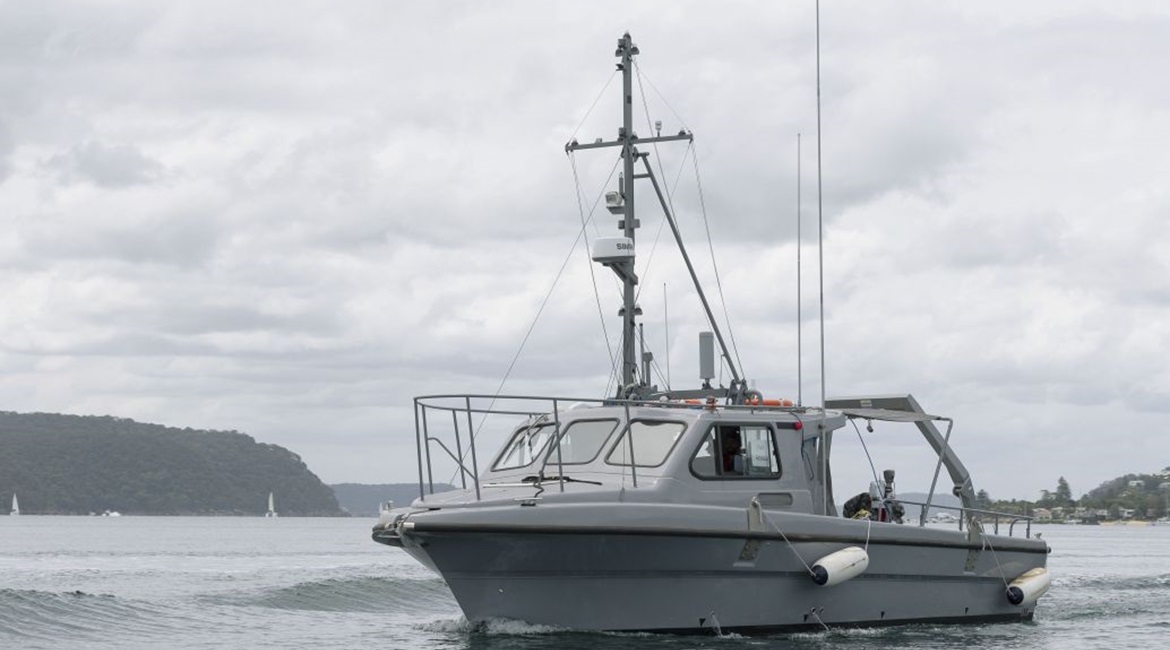
The Royal Australian Navy’s (RAN’s) efforts to operationalise a rapidly deployable mine-countermeasures (MCM) capability using robotic and autonomous systems under Project SEA 1778 is picking up pace with acceptance testing of key systems under way, an Australian Department of Defence (DoD) spokesperson told Janes on 20 January.
“Thales Australia, the prime systems integrator, [is] in the early stages of acceptance testing of the first of these systems,” the spokesperson said, noting that the current deployable MCM suite comprises the Atlas Elektronik Seafox expendable mine neutralisation system, General Dynamics Mission Systems’ (GDMS’s) Bluefin 9 and 12 autonomous underwater vehicles (AUVs), and the MAS Zengrange remote detonation system.

The Steber MCM Support Boat seen at Sydney’s Pittwater area during a pilot trial in early 2020. (Royal Australian Navy/ABIS Jarrod Mulvihill)
Australian glass fibre boat manufacturer Steber International earlier announced that it had won a AUD6 million (USD4.63 million) contract to supply five 38 ft (12 m)-long vessels. The vessels will have a top speed of 25 kt, a payload capacity in excess of three tonnes, and feature a new naval paint scheme. These will eventually be configured into three MCM support boats and two USVs.
“In addition, the prime systems integrator [is] trialling Steber MCM support boats, which are 12 m vessels used to deploy, operate, and recover combinations of the subsystems and Steber unmanned surface vehicles [USVs],” the spokesperson said. “These will be controlled remotely by an ECA Robotics command, control, and communication [C3] system and sweep track monitor to tow the navy’s extant Influence Mine Sweep System [IMSS].”
Looking to read the full article?
Gain unlimited access to Janes news and more...




